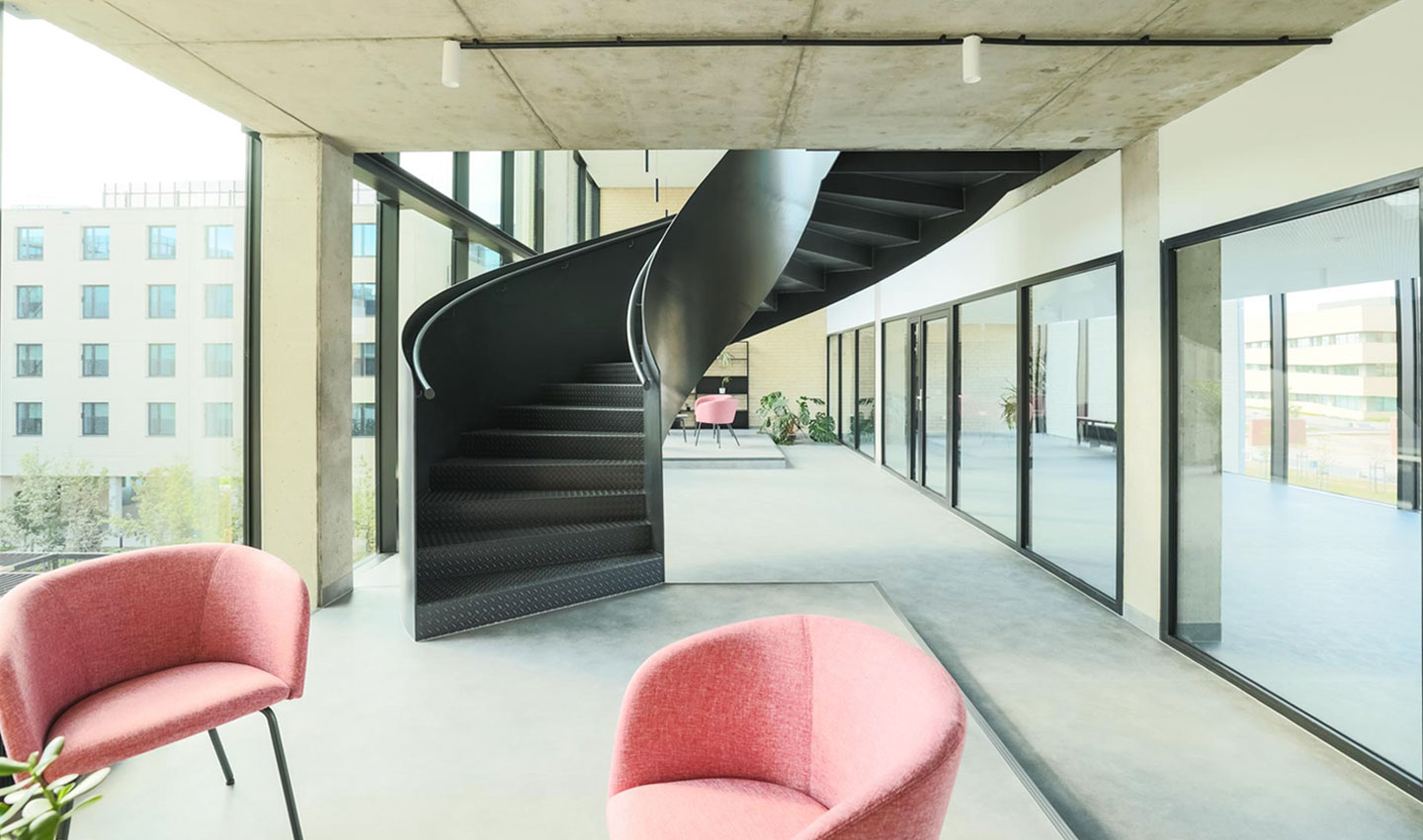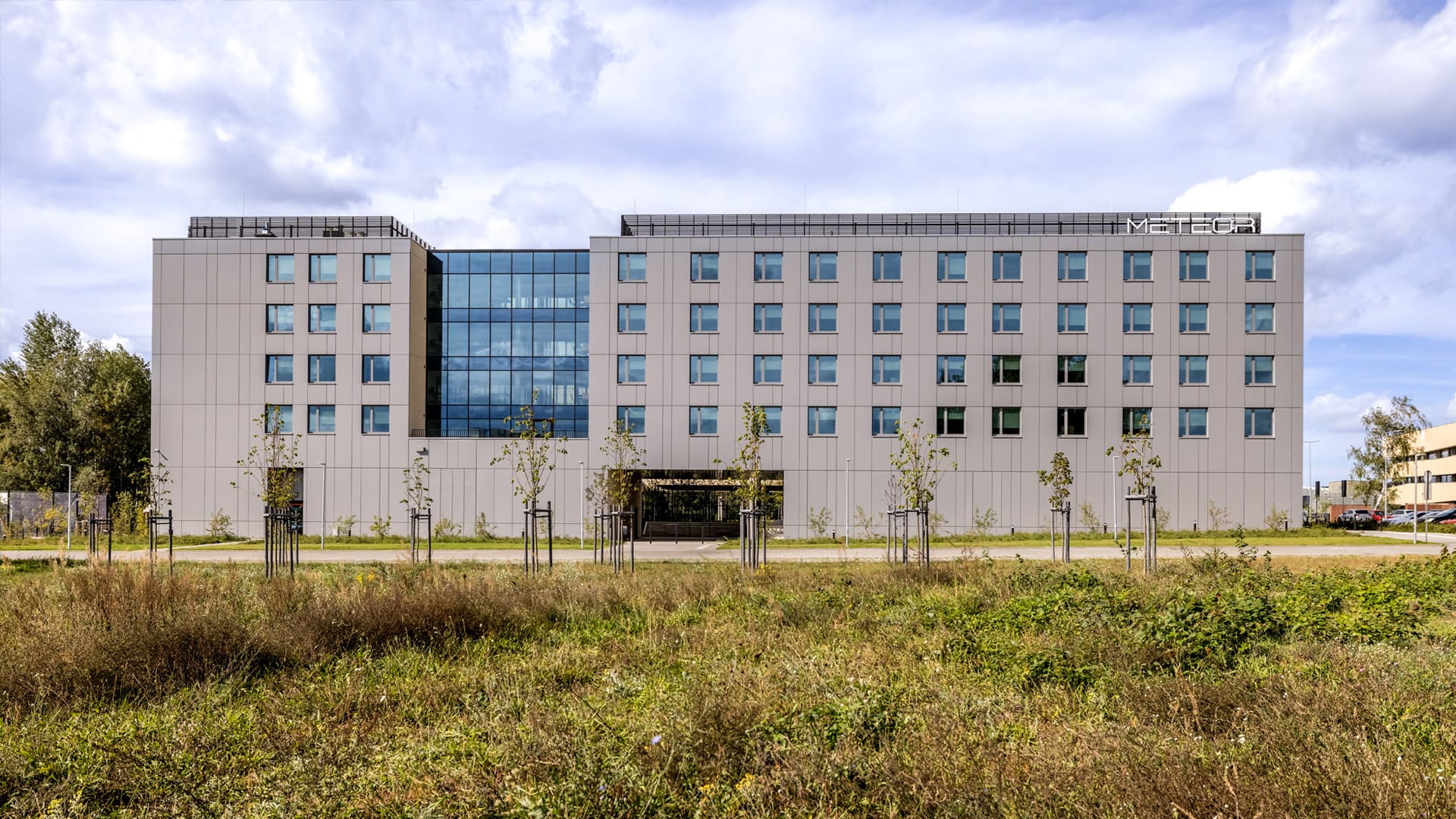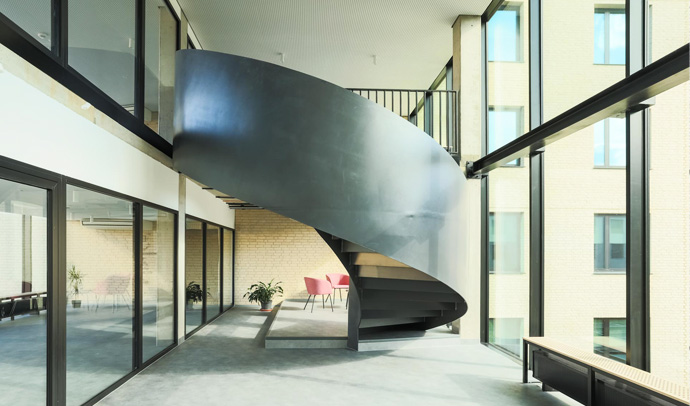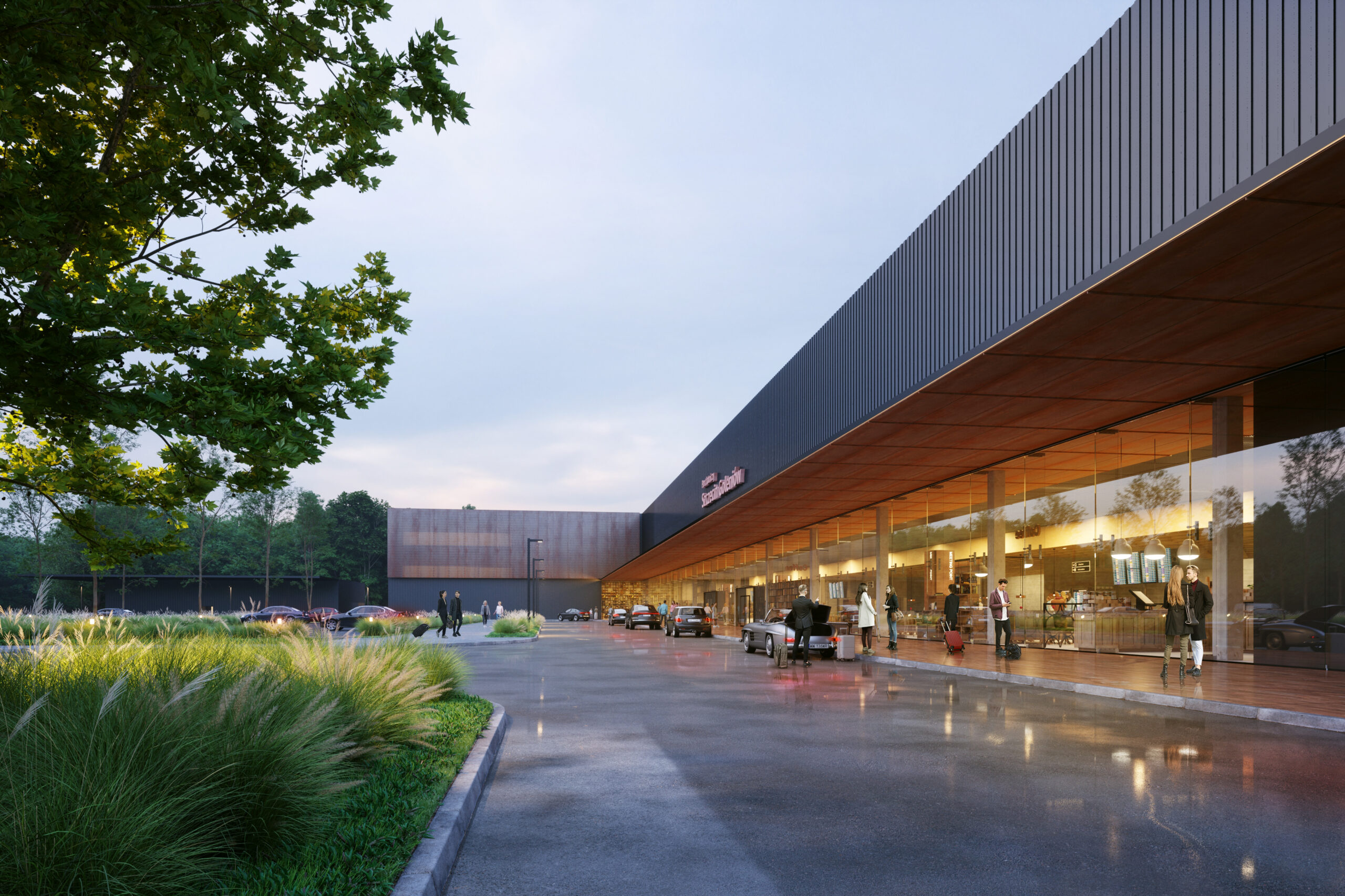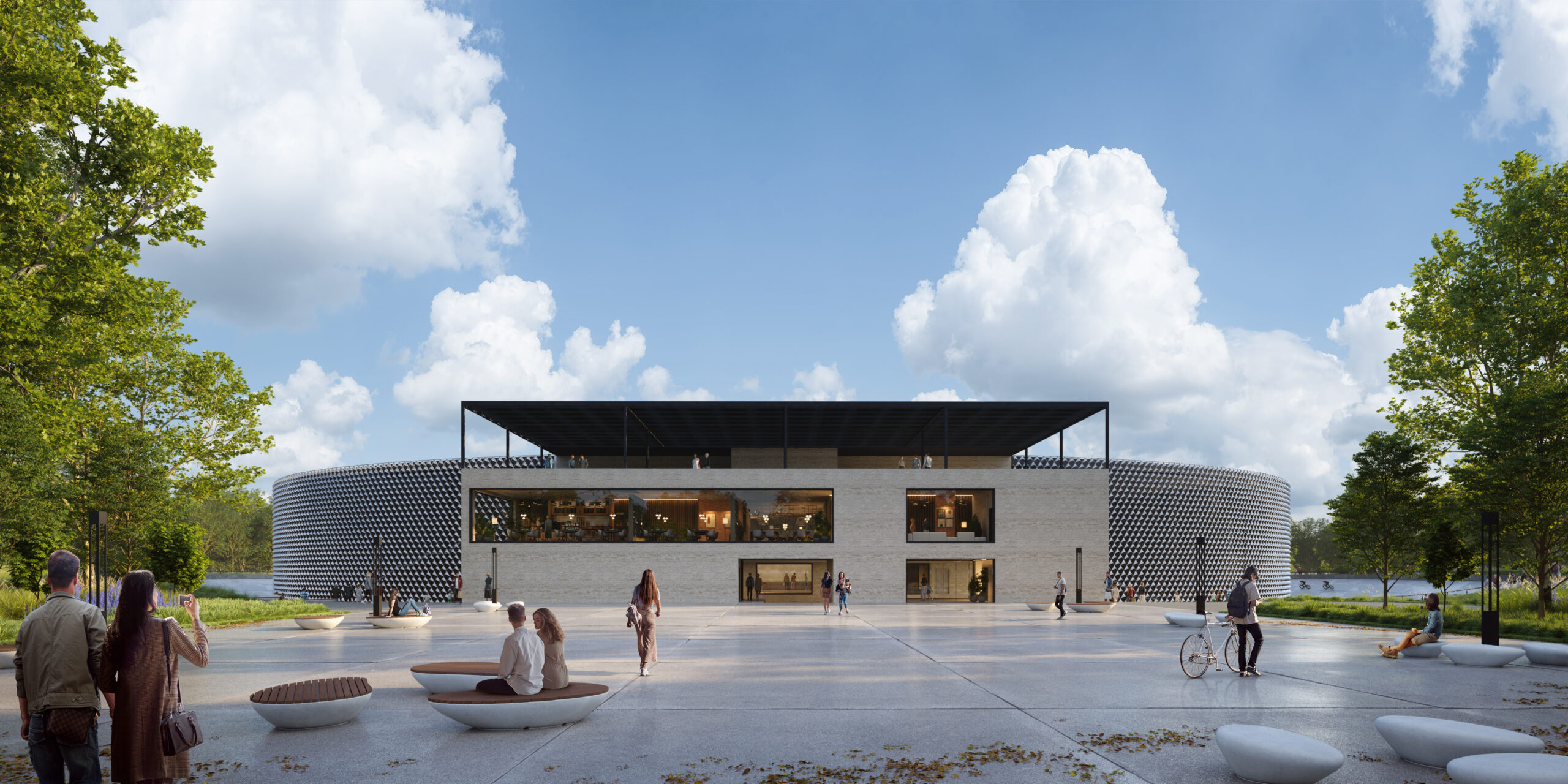While working on the concept design for a student dormitory of Adam Mickiewicz University in Poznan, we decided to combine information available and our own experience related to the functioning of such facilities. Existing buildings of the Morasko Campus, including teaching and research facilities, provided a context for the design. Therefore, the goal was to ensure that the function of the location of the new building, which plays a strong stimulating role, is not finite at any particular time. A dormitory provides an environment for people of different background, life experience and needs. The new reality opens new opportunities and new challenges for them. For this reason, we wanted to create conditions that can compensate any possible inequalities, ensure gradual adaptation and allow people to determine their engagement with the community individually through various forms of residence.
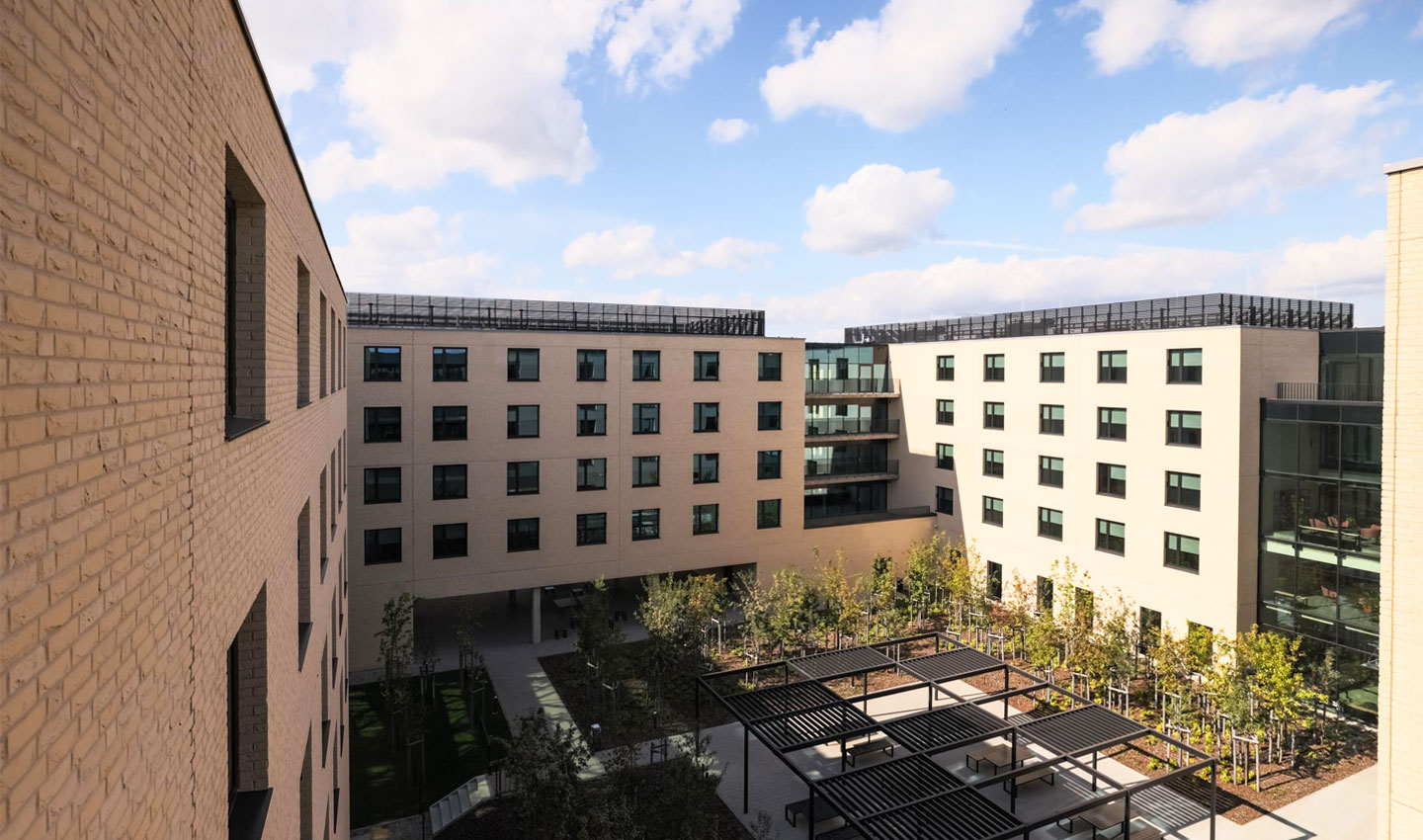
The arrangement of the planned building follows that of existing facilities and takes the form of a concise block with an internal yard. The main, frontal façade of the dormitory continues the line of development set by neighbouring buildings. The combination of grey and brick surface cladding at the inner yard side makes a clear reference to materials and finishing typical for the Campus. The rectangular shape of the building has been cut into four separate parts and the division is highlighted with a brick cladding crawling from the interior of the building to the smooth “outer skin”. Common space and connectors are finished with a brick cladding, identical to the one used on facades, to blur the difference between interior and exterior, and to highlight the openness of the building.
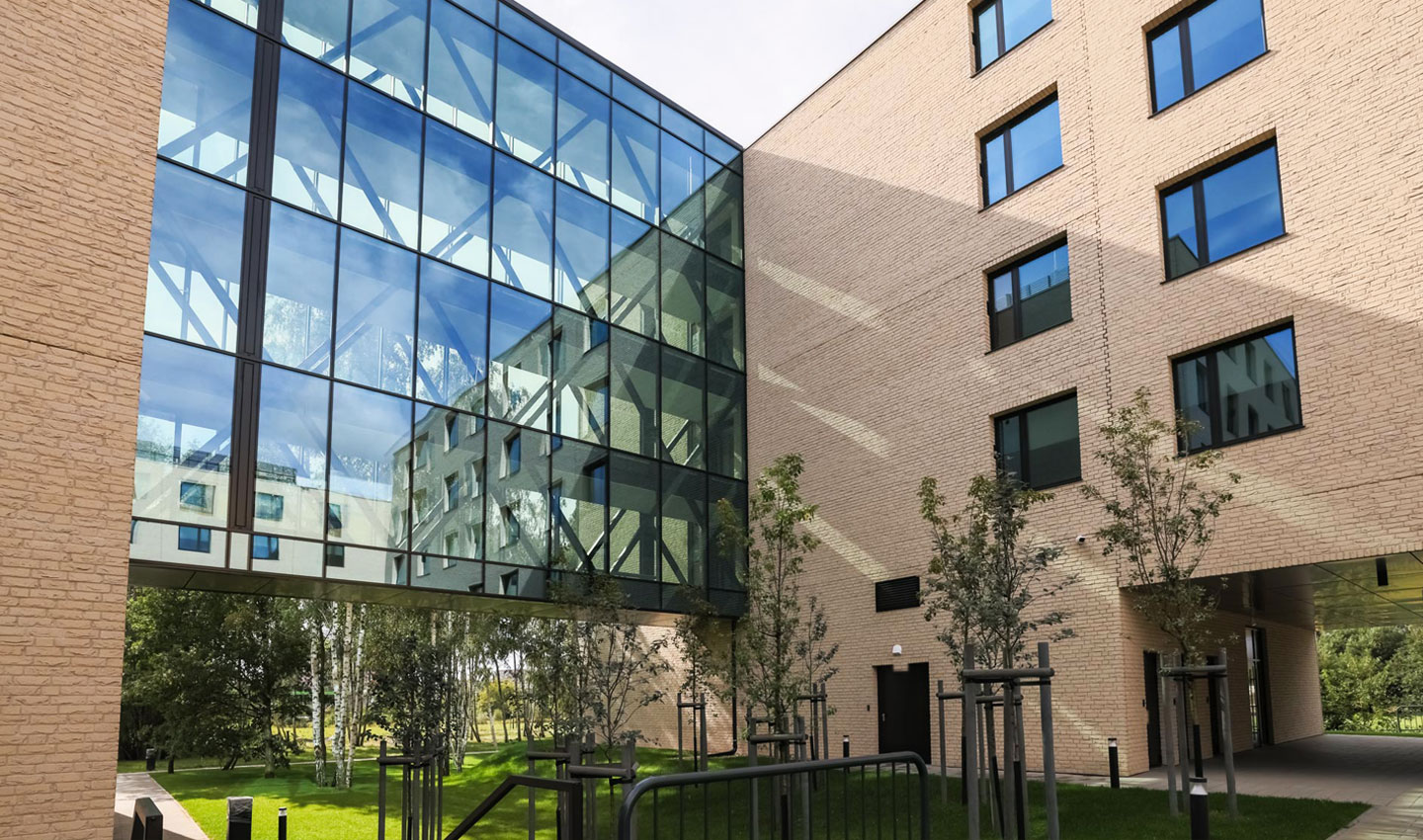
The access to the dormitory and selected services has been planned from Umultowska Street to emphasise the character of the main traffic axis for the Campus. The second most important façade is located in the east and faces the extension of a road between the Faculty of Chemistry and the Wielkopolska Centre for Advanced Technology (WCAT). Southern and western facades are open towards green areas. From the west, the new facility is spatially linked with a site designated for further student dormitories to be developed in the future. The arrangement of the western façade enables to continue the axial development defined by the square in front of the WCAT. According to the functional programme, the dormitory should accommodate 400 students. A single facility will have to cater for the needs of people who are close to each other and for total strangers. To avoid a direct clash of private and common zones, the structure of the residential section is based on the vertical village model. The model supports incremental development in terms of person-to-person relations by applying several spatial solutions. Consecutive organizational levels, based on separate sections of the building, facilitate grading of particular groups in the neighbourhood in terms of their membership. The relationship with the core of the building helps to define zones of various privacy levels and social openness. This provides residents with more opportunities for contact. Such a division into particular sections supports better identification of each user in relationship to the entire building. In the urban framework, the solution refers to the development in the surrounding and helps people to avoid the sense of living in an amorphous behemoth.
